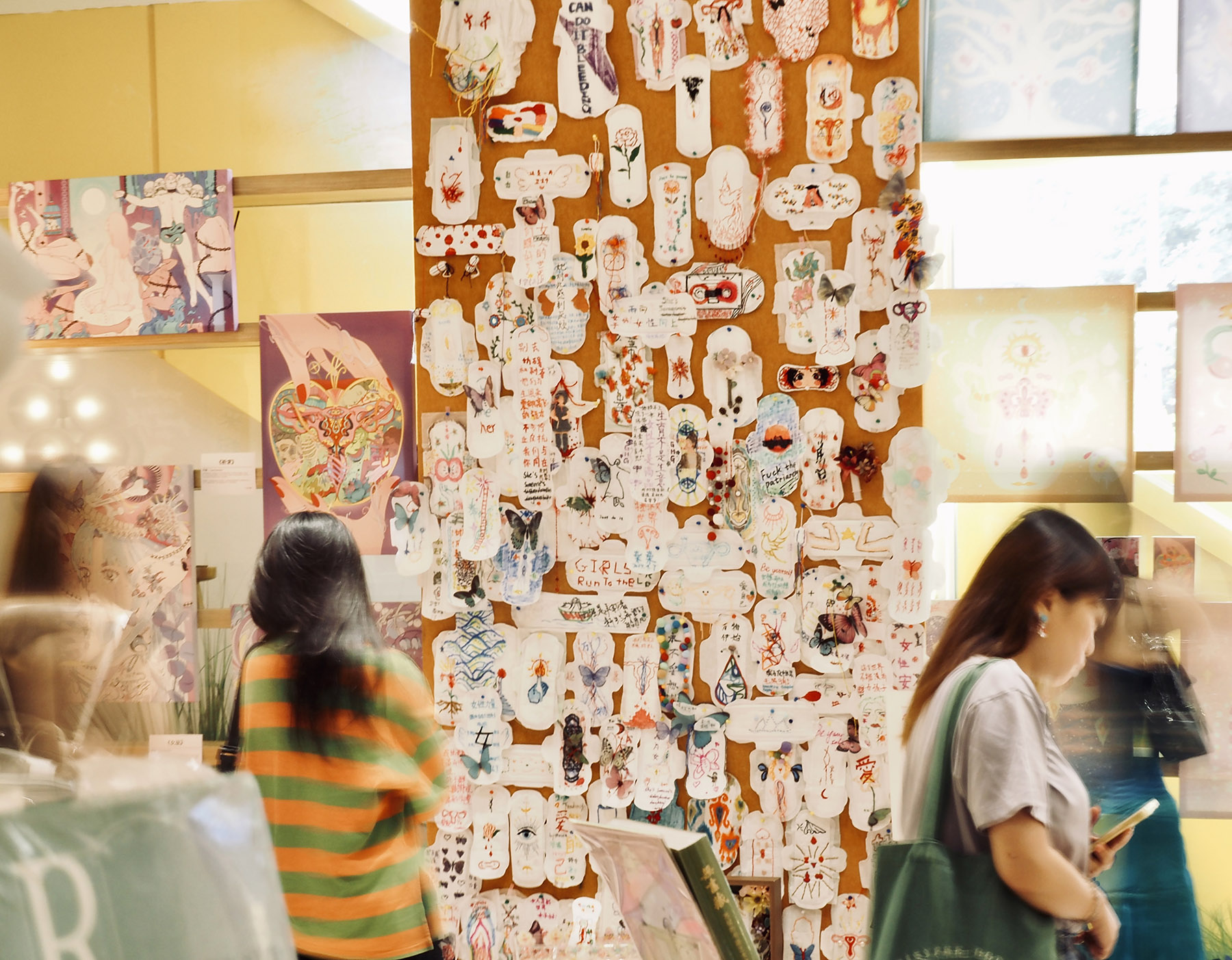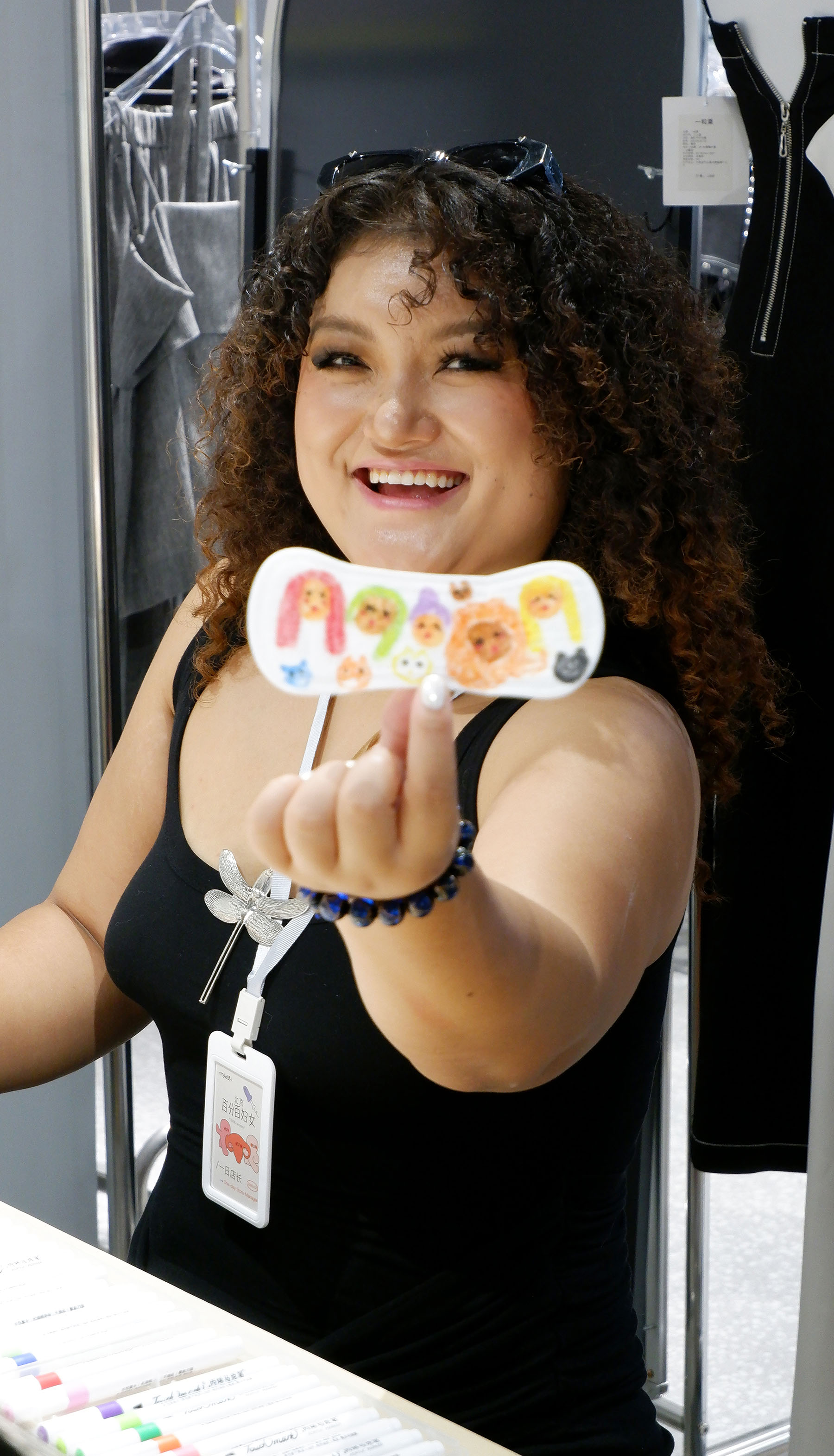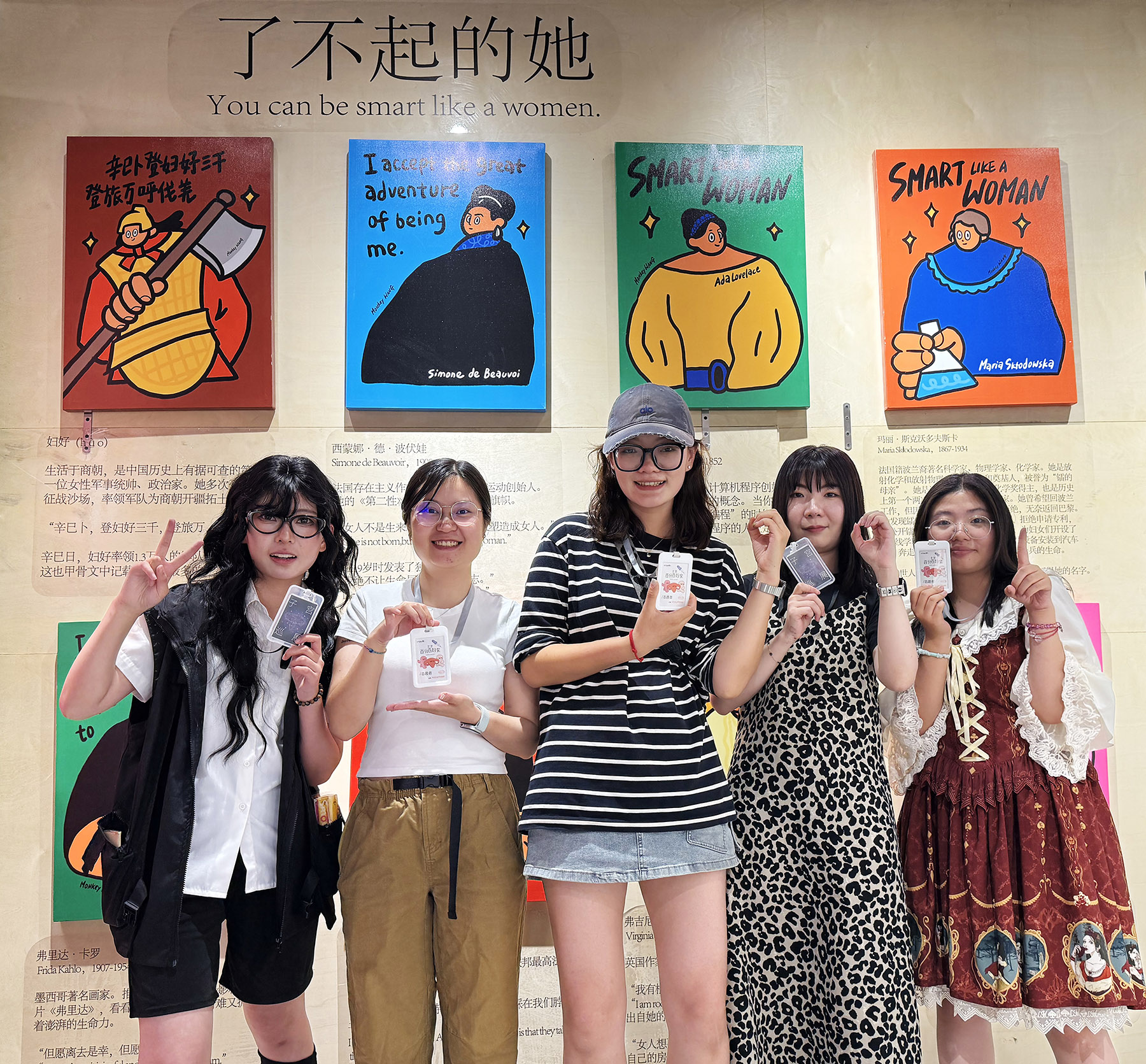From hidden to celebrated, embroidered pads turn into bold statements, merging traditional craft with modern conversations on women's health.

At Beijing's Wangfujing Xiyue Shopping Center, the walls of an exhibition hall are adorned with beautifully embroidered sanitary pads. Once considered embarrassing, these everyday items now greet curious visitors with confidence.
The exhibition, titled "100% Women", ran from June 21 to Aug 20 and was curated by 27-year-old Wang Yiting. Through embroidery, painting, and educational materials, Wang has created a platform to amplify women's voices in one of Beijing's busiest commercial spaces.
"The exhibition features artwork inspired by female reproductive organs, particularly the uterus," Wang explained. "For too long, the uterus has been seen only as the 'cradle of life', with attention focused mainly on reproduction. But women also face challenges such as menstruation and gynecological diseases — issues rarely discussed openly due to stigma."
What started as a small booth at a comic exhibition in May 2024 has since evolved into a traveling showcase, with 10 stops across seven cities in China.
"Initially, the exhibitions were titled 'The Uterus Tour'," Wang recalled. "But when I promoted it online, social media platforms flagged the word 'uterus' as 'inappropriate', which limited our reach. So, I had to change the name."
Despite lingering prejudices, the exhibition has attracted widespread attention on Chinese social media, drawing over 8 million online viewers and more than 18,000 visitors, predominantly women aged 18 to 30.
Many have left messages on the exhibition's official Xiaohongshu (RedNote) account, asking for the show to come to their cities, and some have even offered free space to support future events.

From silence to art
Before launching the exhibition, Wang had already initiated an embroidery project on sanitary pads through Xiaohongshu. This project later became a key part of the exhibit, with some pieces submitted online and others created by visitors on-site.
"Sanitary products used to be hidden away," Wang said, introducing an embroidered pad adorned with vibrant stripes.
The creator of this piece explained that her design was inspired by the menstrual cloths her grandaunt once used in a remote rural area. "Women there could only wash the cloths at night and had to dry them indoors, away from sunlight, because the villagers believed menstrual blood was 'impure'," she said.
"Embroidery has always been associated with women, just like sanitary pads. I want to use these two symbols to challenge period shame," Wang said.
The exhibition also features a wide array of female-centric artworks, all created by women artists. Some were personally invited by Wang, while others joined after visiting the exhibit or discovering it online.
One standout piece is She Can Be, created by a female university student. It depicts a uterus surrounded by hands, with irises blossoming from it — a symbol that women are not just mothers but can flourish in every role they choose.
An educational section, developed in collaboration with two publishing houses, provides visitors with information about women's health and physiology. Topics include the causes of menstrual pain, different types of sanitary products, and illustrations of reproductive organs — all designed to dispel common misconceptions about gynecological health.
"Many women with gynecological issues fear judgment more than the health problem itself," Wang said. "I want to emphasize that these are simply physical conditions; they have nothing to do with a person's character."
She recalled a man who, after visiting the exhibition with his girlfriend, bought a health book to learn more. "Knowledge isn't gendered. Everyone should understand these topics," Wang said.
The exhibition is free, though visitors can choose to pay for creative activities or purchase cultural products.
"After covering the costs, the proceeds are used to buy sanitary pads, which are then donated to girls in underprivileged rural areas," Wang explained. "It's a beautiful thing — women supporting other women in their own way."

Visibility matters
One of Wang's most memorable moments came when a female visitor cried throughout her entire visit.
The woman told Wang that she had moved from the countryside to the city to pursue a PhD. Yet her family urged her to give up her studies and return home to marry, insisting that "the eldest daughter is expected to take on the family's responsibilities".
"It's hard to imagine that such an accomplished woman is still held back by traditional beliefs," Wang said.
But things are changing. Unlike her previous exhibitions, which were held in independent bookstores or cafes, the Xiyue exhibition is Wang's first in a bustling shopping mall. This shift in venue reflects the growing visibility of women's perspectives.
"In bookstores or cafes, the audience was mostly people who already supported our cause, often through online channels," Wang explained. "But in malls, we reached more passersby, many of whom stumbled upon the exhibition by chance."
The response has been mixed. Wang noticed a group of young girls quickly walking past the embroidered sanitary pads, while a mother swiftly pulled her curious child away, saying, "There's nothing to see here."
"Most female visitors, however, were surprised and eager to engage," Wang said, recalling a gray-haired elderly woman who carefully examined each piece.
"Breaking from stereotypes isn't about age — it's about a person's openness to new ideas and perspectives," she added.
Looking ahead, Wang hopes to bring her exhibition to more remote regions to raise awareness about women's health among young girls.
"Many visitors have thanked me for bringing this meaningful exhibition to life," Wang said. "But I want to thank the audience — those who genuinely want to hear women's voices. Their support has fueled the exhibition's growth, from online sharing to a nationwide tour."
Contact the writer at mengwenjie@i21st.cn


